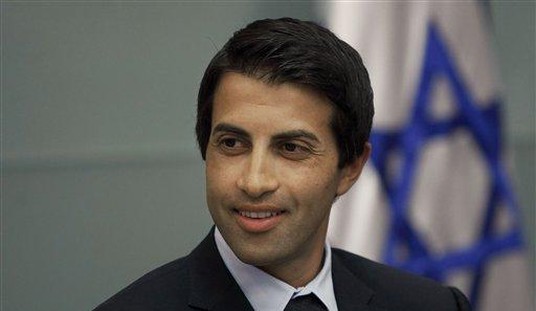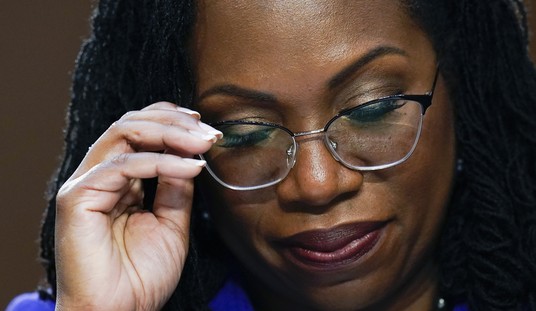“Every adolescent has that dream every century has that dream every revolutionary has that dream, to destroy the family.”
Found via Commentary, Jewish Ideas Daily explores the notion of “Gertrude Stein, Fascist?” The article begins with an image of Picasso’s portrait of Stein from the start of the 20th century and a quote from him. “Everybody thinks she is not at all like her portrait. But never mind, in the end she will manage to look just like it”:
This discrepancy between the imaginary Stein and the private Stein is, in a sense, the true subject of Barbara Will’s recent Unlikely Collaboration: Gertrude Stein, Bernard Faÿ, and the Vichy Dilemma. Will’s book, the latest and most thorough investigation (and this is very much a detective story) of Stein’s political ideology, is extremely detailed and erudite, and brings to public attention what had previously been hidden in scholarly journals: Stein’s wartime translations of the speeches of Marshal Philippe Pétain, head of France’s Vichy regime, with a highly sympathetic introduction that compares Pétain to George Washington.
Will combs Stein’s archives for clues about her “collaboration”—what it constituted, whether it was genuine—and comes away convinced that Stein is guilty of “commitment” to Pétain. But, as often as not, the evidence points to a fundamental murkiness. No matter how much the archive appears to answer and expose, questions always remain, and we frequently cannot say what Stein intended. What appears to be unassailable evidence of collaboration can just as easily be unassailable evidence of Stein’s survival instinct. Perhaps there is no difference.
Consider the Pétain documents themselves. What can we actually say about them? The book was never published, the translations were shoddy, and there are hints in Wars I Have Seen that she abandoned Pétainism. (Her Pétainism was originally genuine.) But Stein was also a Jewish woman (as was Toklas) whose life depended on the protection of Vichy officials, and there is the very real possibility that Stein’s self-styled role as Vichy propagandist was a fiction necessary for survival. Or it is at least an embellishment. Reading this way, we enter a second murkiness of morality, and approach the question of when self-preservation becomes outright collaboration. It is not a comfortable place.
In order to make sense of the Pétain documents, Will scrutinizes almost every shred of Stein’s writing, from articles, essays, and novels to private letters and notes, and reads them for what they might say about Stein’s actions. As Will writes, “It would be a mistake to simply dissociate Stein’s early ‘progressive’ experimental writing from her later ‘reactionary’ politics to excuse or compartmentalize. The tendencies that drew Stein toward both Bernard Faÿ and Philippe Pétain, we could say, were always there.”
Wow, a modernist artist in bed with the Nazis or their collaborators. That’s never happened before! (Or not, as we’ll explore on the next page.)
Well, except for Ezra Pound. And H.G. Wells thought they were pretty groovy…
By 1932, a frustrated Wells found his superior wisdom bypassed time and again by the superior mass appeal of fascism and Communism. In a talk at Oxford provocatively titled “Liberal Fascism,” he called for liberalism to be “born again.” After his customary denunciation of parliamentary politics as an anachronism, he let out his frustrations, calling for fascist means to serve liberal ends by way of a liberal elite as “conceited” and as power-hungry as its rivals. “I suggest that you study the reinvigoration of Catholicism by Loyola,” Wells said. “I am asking for a Liberal Fascisti.” It was also to Communism that “we shall have to turn—we outsiders, that is, the young people with foresight for enlightened Nazis; I am proposing that you consider the formation for a greater Communist Party; a western response to Russia.”
…So much so that George Orwell wrote in 1941, “Much of what Wells has imagined and worked for is physically there in Nazi Germany.”
And then there was Le Corbusier, the Swiss-born pioneering modern architect who adopted France as his country of residence, so much so that during the 20th century, he was the very definition of a French modernist. Corbusier built an early iconic modernist house in 1927 in the suburbs of Paris for Gertrude Stein’s brother. And Corbu himself was also pretty cool with Vichy and their ultimate boss:
Letters published in a 2008 biography of the seminal 20th century modern master, Architect and Painter suggest that the radical urban planner was a Nazi sympathizer whose Fascist thinking went above and beyond previously documented perceptions. In one letter written shortly after Hitler conquered France and much of Western Europe, the Swiss-born architect expresses clear enthusiasm for his intervention. In a letter written to his Mother Corbusier wrote, “If he is serious in his declarations, Hitler can crown his life with a magnificent work: the remaking of Europe.” This is not entirely surprising in light that Le Corbusier aligned himself with the French far-right in the 1930s and accepted a post as a city planner for the Vichy regime that ruled France and collaborated with Nazi Germany during World War II.
At the start of the 1930s, Corbu had submitted designs for the Palace of the Soviets in Moscow, as a reminder that he didn’t much care if his totalitarian socialism was national or international in flavor. Construction began in the late 1930s, from another architect’s design, but was never completed, due to World War II. It was to have been built on the site of Cathedral of Christ the Saviour, which the Soviets demolished to make way for the new building, in a potent act of symbolism.
Philip Johnson, the mercurial founder of the Museum of Modern Art’s architectural department in the early 1930s, helped to put Corbusier and other European modernists on the map in America during that decade. Concurrently, he was also eager to get involved with leftwing politics, working for Huey Long, Father Coughlin, and ultimately, also rather dug the fellows in the dark uniforms in Germany:
I was lucky enough to get to be a correspondent so that I could go to the front when I wanted to and so it was that I came again to the country that we had motored through, the towns north of Warsaw. . . . The German green uniforms made the place look gay and happy. There were not many Jews to be seen. We saw Warsaw burn and Modlin being bombed. It was a stirring spectacle.
Given that numerous modernists were very much taken in by the totalitarian temptation of both international and national socialism, is it possible that the above definitions of “reactionary” and “far-right” might just be slightly off?










Join the conversation as a VIP Member